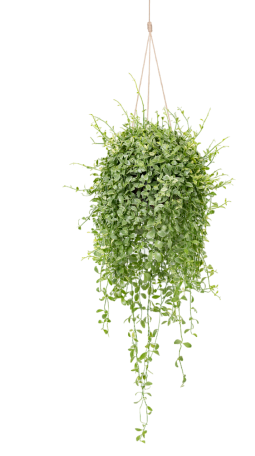Keeping Your Vacation Home Fresh

Keeping Your Vacation Home Fresh
It doesn’t matter whether your “vacation home” is a pull-behind trailer, or a luxurious condo, or a humble cabin in the mountains: when you “get away” to a relaxing place, you don’t want to spend your precious vacation time trying to figure out how to get musty smells out or remove mold from the linens because the climate inside suffered while you were away. Here are our tips to make it welcoming and low-maintenance!
First of all, humidity is the most important factor you’ll want to control in order to keep out mold, and you’ll want to keep the humidity under 60% all the time. If the outside climate humidity rises over 60%, that climate will come inside and settle into soft surfaces, making them a perfect habitat for mold growth. You can only control humidity inside effectively by having a tight envelope, which means sealing up passages where outside air can penetrate in. If no one will be living there while you’re away, you won’t need fresh-air ventilation, so make your get-away home as tight as possible by sealing windows, doors, attic doors, and other penetrations.
Also, remember that relative humidity and temperature are closely linked. For example, if you leave an air conditioner set on 82 degrees and the humidity rises to 80%, you may be at risk of mold forming in less than 2 weeks! (If you’re wondering how that calculation came to be, check out this fun dew point calculator.) In addition, relative humidity in a space will increase as temperature is lowered. Air conditioning will naturally take some of the humidity out of the air, but there are a number of factors that can allow humidity to remain high even when your air conditioner is on.
Here are some options to keep the humidity under control while you’re not there:
-
If you have wi-fi available in your vacation home, now’s the time to take advantage of technology that can pair with existing units like mini-splits, window or portable air conditioners to enable you to monitor climate and control them remotely. Cielo is a company that has a number of products that can help you maintain the right humidity and temperature remotely.
-
Alternatively, if you do not have wifi or app-enabled monitoring, you’ll need to choose a temperature for setting your air conditioner. Although it’s tempting to set the temperature just under the temperature of melting plastic (haha) to conserve energy, don’t do it! Setting the thermostat as high as 85 degrees can cause short run times and not allow the air conditioner to remove enough humidity from the air, creating an atmosphere for mold growth. (No, You Shouldn’t Set Your Thermostat to 85F. Here’s Why.) For that reason, it’s ok to set it 7-10 degrees above the temperature you normally keep it while you’re staying there IF you also take into account the outdoor temperature and humidity. There’s no magic formula for determining this ideal energy-saving-yet-mold-preventing temperature setting, but think about it: if your vacation space is in a hot, humid climate like the southeast US, you’ll want to set the maximum indoor temperature lower than the average outdoor temperature to make the air conditioning come on often enough to remove humidity.
-
Thirdly, if you don’t have a humidity control setting on your air conditioner, or even an air conditioner at all, it’s best to purchase a dehumidifier with a humidistat and set it to 60% maximum humidity. This will ensure that humidity is being controlled, no matter what temperature the interior rises to! Think of this dehumidifier as insurance against mold: if your air conditioner was to stop working, the dehumidifier can still keep your space mold-free if it’s suitably sized for your space. Check out our article on different types and sizes of dehumidifiers, and be sure to set up a portable dehumidifier with a drain into a lower tub or sink that condensate can safely drain all the time.
-
Leave doors to rooms and closets open for best air circulation. Just like air purifiers, portable dehumidifiers cannot reach behind closed doors.
-
Use ceiling fans in rooms and portable fans elsewhere to keep air circulating while you’re away, which will reduce the water content in all your furnishings by evaporation. ““Evaporation increases the humidity of the atmosphere that immediately surrounds the liquid. This humid air takes some time to dissipate into the rest of the atmosphere. The presence of a breeze, a powerful wind, or some other form of air circulation can speed up this process and make the environment of the liquid less humid. Therefore, by decreasing the humidity of the liquid’s surrounding, a powerful breeze or wind can increase the rate at which the liquid evaporates.” (Factors Affecting the Rate of Evaporation) This is why disaster restoration companies use powerful fans to move air over wet surfaces, increasing evaporation and removal of water. With less water in your furnishings, the chance of mold growth is reduced. You can even add air circulation to any space that has a light socket, such as closets and pantries, by removing the light bulb and screwing in a light socket fan (which come in different designs with exposed or enclosed blades).
-
Make sure your air conditioning and dehumidifier drains are clear and a clean air filter is in place before you leave! Many homeowners have come on vacation to find their air conditioner or dehumidifier drain pan overflowing and dripping onto ceilings, floors, and other inconvenient places–what a mess that can also turn into hazardous mold! As a homeowner, make sure to check these drains and change the filter several times during the air conditioning season, or arrange for someone to do the same while you’re away.
-
Window air conditioners need deep-cleaning sometimes. If a musty smell is coming from the air conditioner when the fan cycles on, then you’ll know that dust has infiltrated the cooling coils, absorbed moisture, and is nourishing mold growth. Check our article on how to deep clean it and restore the fresh smell.
-
If you can, shut off water at the main valve to avoid any possible leaks, and switch off the breaker to the hot water heater if it’s electric (turn off gas if it’s gas). This will avoid water leaks under sinks, which can make a nasty moldy mess! If you don’t do this, at the very least shut off water to the washing machine, because burst water hoses at the washer are the single largest cause of home flooding. (Leaving the House for 3 Days or 3 Months? 5 Must-Dos Before Your Trip)
-
Bipolar ionization units like our Germ Defenders, Mobile Air Angels and Whole Home Ionizers are a great way to keep mold away too. At the very least, plugging a Germ Defender into the bathroom will send out ions to kill mold spores in this small space where air circulation can be a challenge.
-
Leaving a portable HEPA filter with activated carbon running is not a bad idea, either. Activated carbon will help avoid that “musty” smell. According to firesafeliving.com, “plug-in” scent devices are not a fire hazard if you leave them plugged in while you’re away, but we at HypoAir don’t recommend them because a) many plug-ins use toxic chemicals like phthalates and formaldehyde, and b) the freshener will dry out before you return anyway, leaving an appliance running on your wall. What’s better: make your own reed diffusers with your favorite essential oil (or combination of oils) and place them throughout your space for a safe, no-mess fresh scent!
These extra steps may seem to take more time on those days you’re packing up to leave your vacation home, but when you come back to a home that is ready for relaxing as soon as you open the doors and windows, it will be worth it!

Photo by Lavi Perchik on Unsplash






